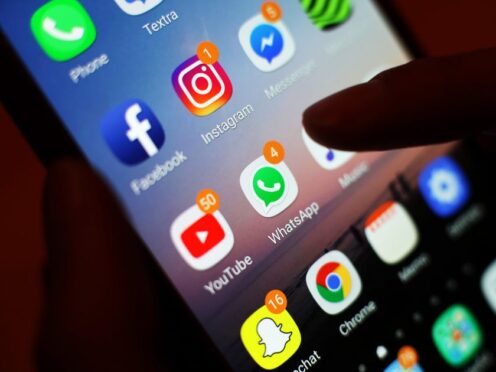Social media giant Meta has been urged to reverse the lowering of the minimum age to use WhatsApp.
The change, which reduces the age limit from 16 to 13, came into force in the UK and EU on Thursday.
Campaign group Smartphone Free Childhood said the move by Meta, which also owns Facebook and Instagram, was “tone deaf”.
Co-founder Daisy Greenwell told The Times: “WhatsApp is putting shareholder profits first and children’s safety second.
“Reducing their age of use from 16 to 13 years old is completely tone deaf and ignores the increasingly loud alarm bells being rung by scientists, doctors, teachers, child safety experts, parents and mental health experts alike.”
She continued: “Among parents, WhatsApp is seen as the safest social media app, ‘because it’s just messaging, right?’.
“And in that way it works like a gateway drug for the rest of the social media apps. If you’re messaging your friends on WhatsApp, why not message them on Snapchat?
“WhatsApp is far from risk-free. It’s often the first platform where children are exposed to extreme content, bullying is rife and it’s the messaging app of choice for sexual predators due to its end-to-end encryption.”
Conservative MP Vicky Ford, a member of the education select committee, said Meta’s decision to reduce the age recommendation without consulting parents was “highly irresponsible”.
Prime Minister Rishi Sunak told the BBC the Online Safety Act would give the regulator powers to ensure social media companies are protecting children from harmful material.
He said: “They shouldn’t be seeing it, particularly things like self-harm, and if they don’t comply with the guidelines that the regulator puts down there will be in for very significant fines, because like any parent we want our kids to be growing up safely, out playing in fields or online.”
WhatsApp said the change was bringing the age limit in line with the majority of countries and protections were in place.
Meta this week unveiled a range of new safety features designed to protect users, in particular young people, from “sextortion” and intimate image abuse.
It confirmed it will begin testing a filter in Direct Messages (DMs) on Instagram, called Nudity Protection, which will be on by default for those aged under 18 and will automatically blur images sent to users which are detected as containing nudity.
When receiving nude images, users will also see a message urging them not to feel pressure to respond, and an option to block the sender and report the chat.
